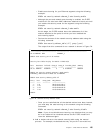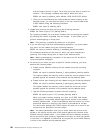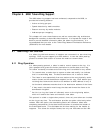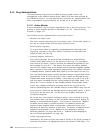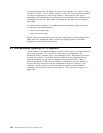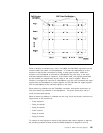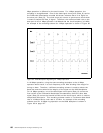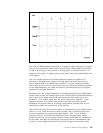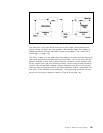The other important point about the Differential Manchester coding is that it uses
a higher baud rate (the number of state changes on the transmission media)
than the actual data transfer bit rate on the ring, to provide the benefit described
above. In fact, the baud rate on the token-ring is twice the data transfer bit rate.
On a 4 Mbps token-ring, the baud rate is 8 megahertz. A 16 Mbps token-ring
runs at 32 megahertz.
8.1.5 Clock Recovery
The other function that needs to be done in a token-ring environment (which is
characterized by a transmission media shared by many stations) is that each
receiving station needs to recover a very precise timing from the received bit
stream in addition to just reconstructing the bit stream. To do that in a
token-ring network, each station could have been designed to have its own
independent clock and a large buffer. In this case, every station would have
waited to receive the whole frame in its buffer, then it would have used its own
clock to generate a new signal which would have been sent to the next station.
The receiving station would have repeated this process and so on. The result of
this design would have been a very large
ring latency
which would have made it
unsuitable for most applications.
In order to minimize ring latency and eliminate the need for a large buffer on
each station, the characteristics of Differential Manchester coding (lots of
transitions on the transmitted signal) are used so that each station can derive a
highly accurate timing source from the received data stream. This timing source
is then used by each station to synchronize its clocks with the other stations on
the ring. The source timing for all the stations is provided by one of the stations
on the ring which is called the
active monitor
.
Note: In any operating ring, one of the stations is elected as the active monitor
and the other stations act as
standby monitors
prepared to take over if the active
monitor fails. The process of electing an active monitor is called
token-claiming
process
. This process is described in 8.1.2.2, “Token-Claiming Process” on
page 131.
Because of at least one state transition per bit in Differential Manchester coding,
the receiving stations can derive a very stable source timing from the received
bit with minimum circuitry and buffering. This results in a minimal delay in each
station and hence in the ring. Also, the stability of the derived timing minimizes
the
phase jitter
and thus allows more stations to be connected to a single ring
segment. However, the phase jitter is not totally removed and requires special
attention.
8.1.6 Phase Jitter
Jitter is the generic term given to the difference between the correct timing of
the received bit and the timing detected by the received station.
Despite techniques such as Differential Manchester coding, it is impossible for
the timing detected by the station to be exactly the same as the correct timing of
the received signal. This is because of the characteristics of the transmission
media and the high speed (4 or 16 Mbps) of the ring. Some bits will be detected
slightly early and some others slightly late. This means that the timing may vary
randomly by a small amount on either side of the correct timing.
In some networks, these small differences in the bit timing do not make any kind
of difference. But, in the case of token-ring network, the jitter is accumulated as
Chapter 8. 8260 Token-Ring Support 133



